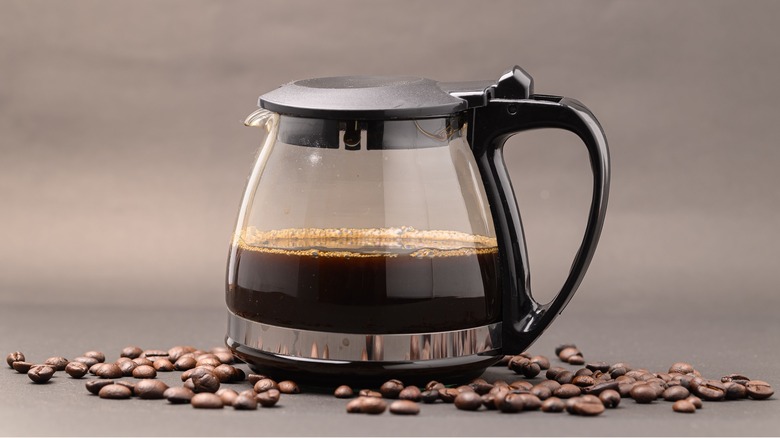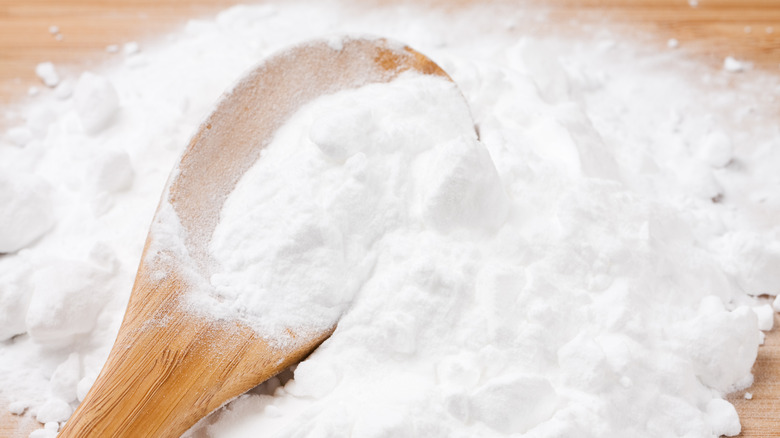Baking Soda Is The Secret Ingredient To A Sparkling Clean Coffee Maker
Baking soda is one of the most versatile items in your kitchen, with uses ranging from helping baked goods rise to deodorizing your fridge. But did you know it's also one of the best ways to keep your coffee maker clean?
It's as simple as mixing a ¼ cup of baking soda with 1 liter of water and pouring it into your coffee maker's water reservoir. Turn your coffee maker on, and let it run. Some people like to stop the machine halfway through, allowing the cleaning solution to sit in the internal parts of the coffee maker for up to 30 minutes before finishing the cycle. Afterward, rinse out the carafe and rerun the machine using clean water. This will rinse away any remaining traces of baking soda, leaving you with a fresh, odor-free coffee maker.
This can be done twice a month, though you can tweak this if your machine gets more or less use than average. But generally, you should be cleaning your coffee maker more often than you think. The natural oils present in coffee can't be washed away with water alone and letting them build up can lead to clogs and unpleasant flavors. The same is true for any minerals or other substances in water, especially hard water.
Baking soda busts build-up
The cleaning secret comes from baking soda's alkaline (high pH) nature, which helps dissolve away coffee oils and mineral scale. In addition, the powder is mildly abrasive, which helps physically remove any leftover buildup. Its deodorizing properties also remove that stale coffee scent that can build up over time.
Those taking advantage of this trick should be careful to use only baking soda, not baking powder. While both are chemical leavening agents based on sodium bicarbonate, the real difference between baking soda and baking powder lies in the extra ingredients added to the latter — typically cream of tartar and cornstarch. They don't have any cleaning benefits and are more likely to leave unpleasant residues even after rinsing.
Another common coffee maker cleaning trick involves a different household item that doubles as a recipe ingredient and a nontoxic cleaner — vinegar. White vinegar is on the opposite end of the pH spectrum as baking soda, but its acidic nature can do wonders to effectively dissolve scale and other tough buildup, as well as kill bacteria or mold. Some use it undiluted, while others prefer to mix it into a solution with water. It's a helpful complement to the baking soda trick to ensure you're always drinking the best-tasting coffee from the cleanest coffee maker possible.

